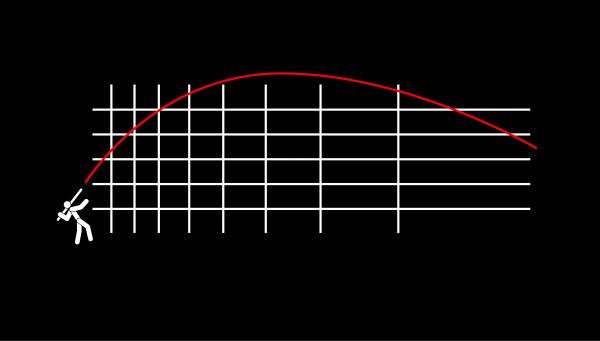One of the most often encountered specifications on speakers’ datasheets is sensitivity, which is the sound pressure level (dB SPL) generated for a nominal electrical input power of 1 Watt. It is one of the most important figures on a datasheet, and manufacturers often stress it to show their products’ quality. The higher the figure, the louder the speaker. It is an important piece of data, but it is often misunderstood, and can easily be «fudged».
Sensitivity is often mistaken for efficiency, although they are two very different concepts. Here’s the story.
Speakers have an important characteristic called impedance, which is the electrical resistance they oppose to audio signals. To make it simpler, two mains impedance categories exist (in the standards): 4 and 8 Ohms (sometimes 16). A speaker is said to have a nominal impedance of 4 or 8 Ohms. Nominal impedance is used, among other things, to work out the reference input voltage for measuring sensitivity. The formula is Pe = U^2/Z, with Pe the electrical power, Z the impedance, and U the input voltage.
An 8 Ohms speaker’s sensitivity is therefore measured with a 2.83 V input voltage because it corresponds to a 1 Watt nominal power (2.83^2/8=1). The same goes for a 4 Ohms speaker: the measurement voltage is 2 V, and the resulting power is 1 Watt. So far so good.
Unfortunately, most speakers have an actual impedance lower than their nominal impedance. According to standards, the impedance of a so-called 8 Ohms speaker can be as low as 5.3 Ohms. Meaning that two speakers with the same nominal impedance can have the same pressure level output – their sensitivity - but for different dissipated powers.
The speaker with a 5.3 Ohms impedance dissipates 1.5 Watt for a 2.83 V input voltage (2.83^2/5.3 = 1.5) – that is 50 % extra power compared to the nominal power. The sensitivity is then not given for 1 Watt, but for 1.5 Watt.
And there is more to it.
A speaker rated 8 Ohms can have an impedance going from 5.3 Ohms up to a hundred Ohms and more, depending on the frequency of the audio signal. The power dissipated can then dramatically vary according to the frequency range, and from one speaker to another with the same nominal impedance rating.
Furthermore, sensitivity is a single-valued piece of data that has no clear and standard definition. It is typically an average of the frequency response, but isn’t always: it is then possible to show off a subwoofer’s sensitivity at 100dB (@1W/1m), although this figure is only found at 200Hz, and its 40Hz sensitivity is 90dB(@1W/1m). Not completely wrong, but not really accurate.
Here lies the difference between power and nominal power, and that is why the concept of efficiency is necessary !
Efficiency is the ratio between the acoustic power generated by the speaker, and the electrical power it dissipates, no cheating possible here !
ⴄ=Pac/Pec
It is a bit more complex than sensitivity, for it is not possible to simply and directly measure acoustic power, using physics and maths tricks is needed, but it is worth it, because it allows to accurately quantify speakers’ power consumption.

Two ported boxes present very similar frequency response curves. It is possible to show off a 98dB (@1W/1m) sensitivity. However, from the impedance curves, we can infer that their efficiencies are very different (and that depending on the frequency range it can vary as much as 100%).
Therefore, at Pikip we use efficiency in order to design and optimize our systems, and allow our unique autonomy (>> Our Technology)
Thanks to our R&D work and our will of reducing power needs, our systems use 10 times less power than conventional PA systems. An article describing our work about efficiency is coming soon.
To conclude, it is important to remember that sensitivity is an important piece of data, because it allows knowing the sound level one can get for a given input voltage – provided the figure is accurate – However, it is misleading when it comes to power and energy. For that purpose, using the slightly more complex concept of efficiency is a must.










